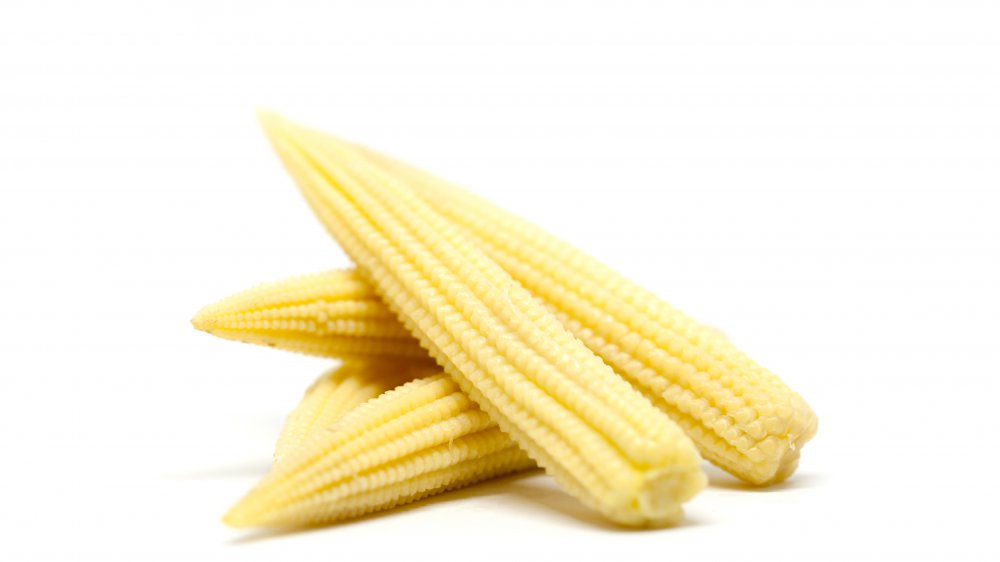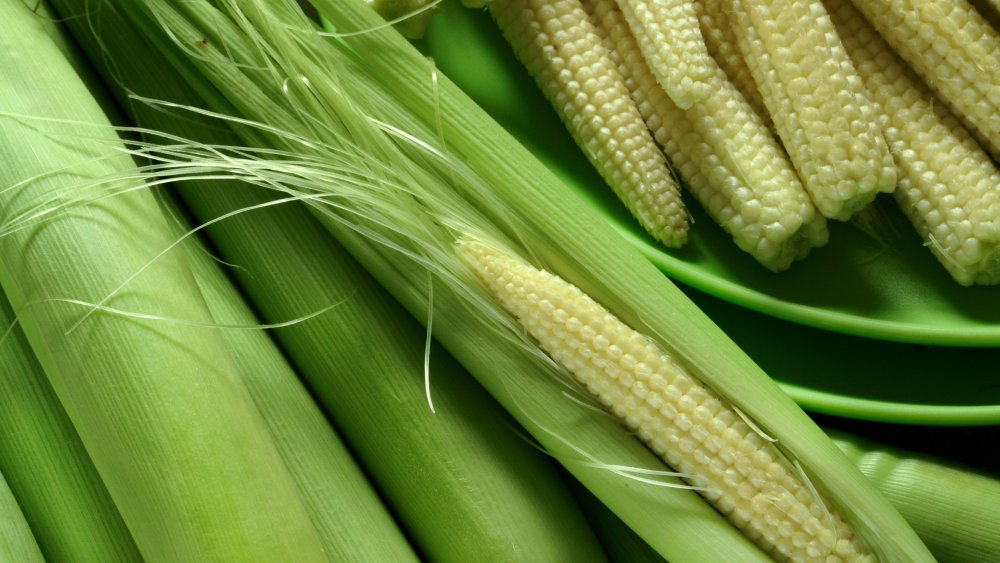What Is Baby Corn Really?
People really seem to dig baby vegetables. Baby carrots, baby squash, baby corn... well, that's about it really. When it comes to baby corn, let's be honest — it really is a little odd. They're more cute than appetizing, really. Yes, it's fun to pick up some baby corn and pretend you're nibbling away at it like regular corn on the cob, but other than grabbing a few pieces of it at the salad bar out of sheer curiosity, it's not that versatile. Outside of a stir-fry, when's the last time you ate some baby corn?
More importantly, what is this quirky little vegetable known as baby corn? Surely, the answer can't be as simple as young corn. Can it?
Spoiler alert: Baby corn is just corn
It turns out that baby corn is indeed, just exactly what it sounds like — baby corn. "Baby corn comes from regular corn," Jim Myers, a professor of vegetable breeding and genetics at Oregon State University told NPR. "It can come from any number of different kinds of varieties, but it's just picked at a much earlier stage, before it's even been fertilized."
The mystery behind baby corn may not be particularly earth-shattering, but unlike a lot of the adult-sized corn we eat in the United States, most of our baby corn supply is imported from overseas. According to Myers, a lot of baby corn comes from Thailand simply because harvesting it is so labor-intensive. American farmers typically use huge mechanical machines to harvest mature corn, but baby corn must be delicately harvested by hand... because it's just an itty-bitty baby.
Harvesting baby corn simply involves stripping the ears of corn from the stalk one or two days after the silks emerge. We typically see it in jars and cans at the grocery store because stores assume that most shoppers don't want to bother with removing the silk threads from teeny tiny ears of corn. As Taste points out, the crunchiness of baby corn makes it ideal for salads and stir-fry dishes, but because it's young, it lacks much nutritional value.
What this little corn lacks in nutritional value, though, it clearly makes up for in sheer cuteness.

